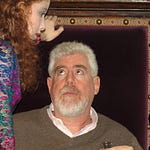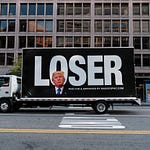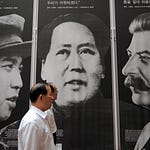Allan M. Brandt is a professor of the history of science at Harvard and author of The Cigarette Century: The Rise, Fall, and Deadly Persistence of the Product That Defined America. He discusses the tobacco industry’s 20th-century campaign to make its addictive and deadly product somehow acceptable — and its 21st-century campaign to do it all again.
* FULL TRANSCRIPT *
GARFIELD: Welcome to Bully Pulpit. That was Teddy Roosevelt, I’m Bob Garfield with Episode 6: Crime of the Century.
OLCZAK: The prime cause of harm generated by the smoking is an outcome of the combustion. Okay? When you burn the cigarette, when you burn the tobacco you release the thousands of the chemicals. Many of those chemicals, they are very bad for the human body. If you eliminate the combustion, you actually can achieve a very, very significant reduction in exposure to the toxicants.
GARFIELD: In our last episode, we heard from Philip Morris International CEO Jacek Olczak as he boasted about Philip Morris’s plan to convert half of its business to non-combustible tobacco products by the year 2025 — a strategy that impresses Wall Street and part of the public-health community, but to others is merely reminiscent of a century of Big Tobacco manipulation, cynicism and fatal lies. In that story we heard briefly from Allan Brandt, professor of the history of science at Harvard and author of The Cigarette Century: The Rise, Fall and Deadly Persistence of the Product That Defined America. This week, we return to the professor and the subject of the Cigarette Century, so deadly and corrupt.Allan, welcome to Bully Pulpit.
BRANDT: Thanks so much for having me.
GARFIELD: The tobacco industry has a long and dark history, going back at least to the early 50s when the evidence of smoking's dangers became an existential threat to cigarette sales. Can you tell me what the research was at that turning point?
BRANDT: There’d been a lot of research going all the way back to the middle of the 19th century about the possible harms of smoking, but there wasn't fully substantiated knowledge, I would argue, til right around 1950. But then things changed quickly and radically because a group of early epidemiologists, both in England and the United States, began to study smokers and what happened to their health, and they began to study lung cancer patients and what their smoking behaviors had been. And they came up with incredibly robust and important findings that were published around 1950, ’52 and three, more studies by 1954. And all of them reached one absolute conclusion, which was that smoking was actually a cause of lung cancer and likely other diseases that would be studied subsequently, especially heart disease, stroke and other cancers.
GARFIELD: So of course, the industry said, oh my God, this is terrible news. We can see that we're merchants of death and we will henceforth get out of the cigarette business and into selling wintergreen candy. Right?
BRANDT: That's not exactly what happened. Here you have a multi-million dollar industry confronted by scientific evidence that their product causes disease and death. And so the tobacco executives started to put their heads together and figure out, how do we respond to this? Do we say the science is bad? Do we just disregard it? Do we try to incriminate the scientist who produced this? And eventually what happens is that in December, 1953, the six major CEOs of the big tobacco companies get together at the Plaza Hotel in New York to consider the way forward because they knew that they were in a massive crisis in terms of their industry. And they called in probably the nation's most powerful and influential public relations executive, John Hill, to consult with them. And he listened to them for a while. And then he said, I don't think you understand how to do this. What you need to do is create uncertainty. Don't deny that these studies have appeared. Just say there's much more we need to learn. We need more science. And in a sense, one of the things that Hill told them is if you don't like the science that's coming out, begin to develop your own science. Find skeptics, find marginal scientific and medical people, give them grants and have them produce science that will serve the interest of your industry. What the tobacco industry really introduced in the early to mid 50s was the idea: How can we confuse science? How can we obscure what's coming out? How can we make people say, you know, there's a debate, we just don't know? A lot of physicians and scientists were coming out, 1952, 1953, saying we need to regulate cigarettes, we need to tell our patients to quit. A lot of doctors did quit and by the early 1960s, the industry's campaign — based on Hill’s principles — really led to people saying we just don't have enough evidence yet.
GARFIELD: Now, as you mentioned, 70 years ago the research showed the correlation between cigarette smoking and cancer based on health outcomes and behaviors for large study populations. But it wasn't laboratory science on a cellular level. So this opens some space for creating doubt, circumstantial evidence, blah, blah, blah. You have identified the industry's three pronged strategy.
BRANDT: Yes. The three points were essentially that the evidence of the harms of smoking were inconclusive, that cancers had many causes and what we would really need is much more intensive research to resolve a publicly important question and that no one was more committed to the idea of learning more, investigating more completely and resolving this question. And then, of course, if we ever do find anything in cigarettes that might be harmful, we will take the lead in fixing our product and assuring the health of the public.
GARFIELD: Yeah, like this Chesterfield commercial from the late fifties. The interviewer was a familiar face to the audience of the day: George Fenneman.
GEORGE: As you watch, an electronic miracle is taking place as a stream of electrons creates this television picture. Here tonight is another electronic miracle, destined to affect your lives even more than television. This new electronic miracle, AccuRay, means that everything from auto tires to ice cream, battleship steel to cigarettes, can be made better and safer for you. Now meet Mr. Bert Chope, brilliant young president of Industrial Nucleonics. Well Bert, exactly what is AccuRay?
CHOPE: Well, George, it is a device by which a stream of electrons passes through and analyzes the product while it is actually being made. They transferred what they see to this electronic brain, which adjusts the production machinery for errors down to millionths of an inch.
GEORGE: Well, I always ask the question so many people ask me. How does AccuRay make Chesterfield a better cigarette than was ever possible before?
CHOPE: Every cigarette made with AccuRay control contains a more precise measure of perfectly packed tobaccos, so Chesterfield smokes smoother, without hotspots or a hard draw.
GEORGE: That’s why Chesterfield tastes better and is best for you. Bert, what’s your cigarette?
CHOPE: You see, I know what AccuRay can do.
GARFIELD: “Better for you,” like Kent’s micronite filter and Marlboro Lights were supposedly — but not actually — better for you. But apart from — excuse the expression “puffery” — they stacked the deck with putatively legitimate scientists.
BRANDT: They found a group that was hostile to epidemiology, that was committed to the idea that cancers have to be genetic. They hired a lot of people who were highly sympathetic to eugenic notions of genetics and elitism. And then the other thing they did is they gave out a lot of money to scientists. So in my research, I found a young scientist — his grant from the government had run out and they were very good at identifying these folks who were not really fully succeeding and saying, well, we can give you a grant and here's what we want you to do. And then when they produced papers, they edited the papers, they turned them around. Whenever there was a paper that seemed to be hesitant about the connection between smoking and disease, they would make sure it appeared in the press. And they really said there are two sides to this story. The media, in a sense, supported the Hill principles because the media was very committed to the idea that every story has two sides.
GARFIELD: The same kind of false balance in, let's say, climate coverage, where climate denialists are given, you know, equal time with global scientific consensus.
BRANDT: What the climate science world is based on are the principles of what today are widely called the tobacco industry playbook. So you set up these, like, industry funded, so-called independent research agencies — you know, the Center for Indoor Air Research. And what it turns out is that they're funded by industry and they collect scientists and materials as if they were independent. And the tobacco industry worked very, very concertedly to produce this alternative. And one of the arguments I'm prepared to make is the tobacco industry invented disinformation at this scale.
GARFIELD: You were talking about the the cult of false balance, which is a longstanding journalistic reflex. But there's something else, and that is that as a revenue source, tobacco advertising was one of the two or three largest sectors for television and newspapers and magazines. So while the harm of tobacco was reported, there were huge disincentives for the media into taking sides. Do you think that that disincentive was corrupting?
BRANDT: I do. I think that one of the things that the tobacco industry also invented, in a sense, were these very powerful conflicts of interest and in the largesse of the companies and their deep pockets really corrupted a number of critical social institutions, to some degree journalism. But in many ways, I would emphasize how it corrupted our political processes. And today, we give a lot of attention to special interest lobbying and contributions to political campaigns that we understand have undermined our democratic processes, especially around issues of science. The first part of Hill’s principles, and part of what became the tobacco industry playbook, was to invest in campaigns and invest in politicians and shape their views on legislation through these funds. So, the industry invented disinformation, but it also created the kind of special interest lobbying. So, I sort of go from tobacco. We could include guns. The beverage industry has done a lot of this. And, of course, most notably right now is that the big energy oil companies have utilized so many of these techniques that are familiar for me from investigating the history of tobacco.
GARFIELD: When it came to influencing the public and manipulating behavior, it turns out that these were not inexperienced people. As you wrote in the previous half of the 20th century, the industry, quote, “took a product that had existed at the cultural periphery and remade it into one of the most popular, successful and widely used items of the early 20th century.” You know, it's hard to imagine that there was a time when cigarette smoking was relatively marginal. How did they engineer its path from marginal to ubiquitous?
BRANDT: The rise of popular smoking is one of the most remarkable stories in the history of mass consumer culture. The industry, through some very brilliant marketing and thinking, was able to take a product — little used, on the margins of society; actually quite a stigmatized product, late 19th century — and absolutely turn it around. They were very aware of the power of mass media, and they focused on making it for youth and making it cool. They focused on making it sexy and they realized that they had a potential to manipulate the culture. There was sort of the notion that cigarettes and American culture didn't fit, that we emphasize productivity, individual responsibility, no idleness. A lot of our culture was hostile to pleasure. And they inverted this. There are many examples of people like Edward Bernays, who was a giant early 20th century thinker in advertising and public relations. And he hired women to march in the Easter Day parade smoking cigarettes because women, it had been thought, shouldn't smoke in public. There were a lot of issues about women taking up smoking, and he associated cigarettes with women's rights and suffrage. So there was a strategic approach to popularizing cigarettes that was incredibly effective. And of course, you have this added advantage with cigarettes that when you do get people to smoke, you also get them addicted. Bernays went to the Hollywood studios and asked them to portray characters that smoke and brought cigarettes into the movies in an intense way. It didn't just happen. It’s just an unbelievable story. Almost no one smokes in 1900, especially not cigarettes, and by 1950, 1960, we're very close to a majority of all adults smoking. And the impact that that had on health and continues to have on health has just been devastating.
GARFIELD: The Hollywood story is just extraordinary, because not only did the rise of motion pictures parallel the rise of tobacco usage in the world, actors were eager to embrace it because, as you mentioned, you know, it was sexy, but also, also — dude! — it gave them something to do with their hands.
BRANDT: Absolutely, and it was like, this is a prop. I'm giving it to you. It's going to appeal to our consumers. They hired many major movie stars who smoked in their movies to then do advertisements for them.
GARFIELD: From Ronald Reagan to Mary Tyler Moore to the rugged and macho John Wayne.
JOHN WAYNE: Well, after you’ve been making a lot of strenuous scenes, you like to sit back and enjoy a cool, mild, good-tasting cigarette. And that’s just what Camels are, mild and good-tasting pack after pack. I know, I’ve been smoking ‘em for 20 years. So why don’t you try ‘em yourself. You’ll see what I mean.
GARFIELD: Frank Sinatra actually sang about his cigarette TV sponsor.
FRANK SINATRA: Cheeeesterfield. You start with a Grade A tobacco, the best that you can get. It’s the sound of big pleasure, the sound I’ll be making for Chesterfield in this time spot every week. It’ll be easy for me because Chesterfield is my brand. It has been for years.
GARFIELD: And Winston brokered a truly historic celebrity deal — or, anyway, prehistoric.
BARNEY RUBBLE: Winston packs rich tobaccos specially selected and specially processed for good flavor in filter smokin’.
FRED FLINTSONE: Yeah, Barney, Winston tastes good, like a … cigarette should.
GARFIELD: Yes, decades before before the cartoon Joe Camel outraged the public by targeting kids, R.J. Reynolds managed to co-opt the appeal of Fred Flintstone and Barney Rubble — neither of whom actually smoked Winstons, because they were animated characters from the Stone Age. The point being, though, that before anyone ever used the word “influencers,” Big Tobacco purchased endorsement from whomever conferred authority?
BRANDT: Many sports figures, movie actors, famous people, doctors, and they helped create this sort of cult of influence and personality.
GARFIELD: Doctors. DOCTORS.
NARRATOR: Yes, folks, the pleasing mildness of a Camel is just as enjoyable to a doctor as it is to you or me. And according to this nationwide survey, more doctors smoke Camels than any other cigarette.
GARFIELD: So before 1952, when the epidemiology started piling up, these guys were wizards at social engineering. And so now it came time to turn those skills on the problem of debunking legitimate science. And hence the playbook you've described. Now, 1953 was 1953, but over time the epidemiological smoking guns were being validated by lab research, cancer in mice and eventually a more fundamental understanding of the effects of tar, nicotine and other chemicals at a cellular level. But controversy was the industry story and they were sticking with it.
BRANDT: Yes, it worked for a very long time until it began to erode, because of the concerns that began to arise in the late 1950s, but especially the 1960s, about negligence and responsibility for the tobacco companies through torts and suits.
GARFIELD: Product liability.
BRANDT: Yes. And so the lawyers kind of took over the strategy by 1960, certainly by 1964. And they said we don't have any choice, because otherwise the liabilities to the industry and information that we know it's harmful would undo the financial structure of the universe of the industries. And there are many ironies about this. Like, you sort of think, well, labeling cigarettes was a public health benefit. And at first the industry opposed labeling, but then the lawyers shift. They say, well, we actually need a label to protect us from liability. So, you know, the first label said: caution, cigarette smoking may be hazardous to your health. Actually, its biggest implication was that it protected the companies from liability.
GARFIELD: And if anyone said, well, how, you know, how could you have not warned us? They said, well, we did warn you.
BRANDT: The companies would say, well, you were aware that there was a label on the package, weren't you? And the litigant would say, yes, I was. And then they say, well, how can you hold our company responsible? And that's the way it went for a long time, really, until the 90s. And then a variety of forces began to direct very damning evidence to the companies. And one is it became very clear that the companies had maintained high levels of nicotine to keep smokers addicted.
GARFIELD: But in April 1994, at Congressman Henry Waxman’s House hearing on tobacco, under questioning from Congressman Ron Wyden, seven CEOs of major tobacco companies lied under oath — not only about augmenting the effect of nicotine in their products, but that nicotine was the drug that hooked smokers to begin with. The Surgeon General, the National Institutes of Health, the World Health Organization and others were unanimous, but …
REP. WYDEN: Lemme begin my questioning on the matter of whether or not nicotine is addictive. Lemme ask you first — and I’d like to just go down the row — whether each of you believes that nicotine is not addictive. I heard virtually all of you touch on it and just, yes or no, do you believe nicotine is not addictive?
CEO: I believe nicotine is not addictive, yes.
REP. WYDEN: Mr. Johnston?
CEO JOHNSTON: Congressman, cigarettes and nicotine clearly do not meet the classic definitions of addiction. There is no intoxication.
REP. WYDEN: Alright, we’ll take that as a no. And again, time is short. If you could just, I think of each of you believe nicotine is not addictive. We just would like to have this for the record.
CEO: I don’t believe that nicotine or our products are addictive.
CEO: I believe nicotine is not addictive.
CEO: I believe that nicotine is not addictive.
CEO: I believe that nicotine is not addictive.
CEO: I, too, believe that nicotine is not addictive.
REP. WYDEN: Dr. Campbell, I assume that you’re aware that your testimony, and you’ve said in your testimony that nicotine is not addictive, is contradicted by an overwhelming number of authorities and associations. For example, in 1988 the surgeon general of the United States wrote an entire report on this topic. The surgeon general, of course, is the chief health advisor to our government. I assume you have reviewed that report.
DOCTOR: Yes, I have sir.
BRANDT: So that was one thing. The industry fought this tooth and nail, but the evidence really was rising all the time, that smokers could create risks for nonsmokers, especially indoors. And if Americans have a view that it's up to me and I'll take my risks, they're very sensitive to the idea of risks being imposed on them by others. And the change in indoor smoking bans, workplace smoking bans, getting smoking off of airplanes, all these things, I think, undermined the notion that this is a good and healthy product. And these were all elements of the decline of tobacco in the United States. The one other issue that I really wanted to raise here, though, is that the industry had always been focused on getting young smokers. They had to go get younger smokers if they were going to — the word they use — replace the smokers who were dying and the creation of the tobacco market was in the youth market. And often the youth market is an illegal market. For many years, you couldn't buy cigarettes til you were 16 or 18. The number kept going up. So in the 90s, and a lot of people remember this, you know, there was the famous Joe Camel comic book campaign.
GARFIELD: Joe Camel was a cartoon.
BRANDT: Yes, a cartoon character. Totally cool. Flying jets, getting women, hanging out in clubs. And a lot of the information from the development of that campaign is now fortunately in the archives because R.J. Reynolds was sued.
BERNSTEIN: The commission’s complaint alleges that this campaign was used to promote an addictive and dangerous product to children and adolescents under the age of 18, and that this practice is illegal.
GARFIELD: That was Jodie Bernstein, Director of the FTC’s Bureau of Consumer Protection, in May of 1997.
BRANDT: And so I think these things together, you know, the idea that secondhand smoke was harmful to others, that the companies had manipulated cigarettes to be more highly addictive at a time that they said we're trying to protect the public, the appeal to kids. These are the things that led to the kind of crisis of the industry that in some ways it remains in and is looking for strategies to emerge from.
GARFIELD: We discussed how the surgeon general warning actually turned out to have the ironic effect of creating legal impunity for the industry. But these smoking guns you're describing, like the marketing to kids, like the documentary evidence that they had added nicotine to tobacco and the science on second hand smoke, they ultimately would give power to litigation that was able to do what legislatures and regulators could not do. And that was to hold the industry accountable.
BRANDT: Yes, there was a shift in litigation strategy, in the 90s, from smokers who had been harmed being the plaintiffs, to a very innovative strategy where the state said, well, we pay all these monies to take care of people who your companies have caused to be ill, and you need to compensate our states for the health care expenses that we have had associated with smokers. And it was in the many billions of dollars. And so this states’ litigation, brought by attorneys general, turned out to be in many ways quite successful and resulted in what's called the master settlement agreement at the end of the 90s that agreed to pay the states 246 billion dollars to compensate them for the costs that they had had.
GARFIELD: Again in 1997, this was Mississippi attorney general Mike Moore taking a victory lap before the assembled Washington press.
MOORE: We wanted this industry to have to change the way they do business, and we have done that. We wanted the industry to stop marketing to their products to our kids, and we have come up with a comprehensive plan that will do that. We wanted to do something that would punish this industry for their past misconduct, and we have done that. And we wanted to make sure that every single person, not only in America but this entire world, knows the truth about what the tobacco industry has done to the people of this world over the last 50 years, and we are satisfied that we have done that.
GARFIELD: At approximately the same time as the master settlement was put into force — and this quarter of a trillion dollars penalty to the industry seemed to be a huge turning point, and tobacco usage has plummeted worldwide since then, so I guess it was a turning point — but it happened at the same time that Francis Fukuyama published his book The End of History, which was predicting essentially that liberal democracy had taken hold the world over and that authoritarianism and the forces of reaction were just going to fade into oblivion. That turned out to be prematurely burying ultraconservative politics. And, equally it seems to me that the master agreement prematurely buried the notion that the tobacco industry was on the skids, on the way to oblivion. It did not play out that way.
BRANDT: It didn't at all. And we have a notion here in the United States and many countries in Western Europe that we've seen this dramatic decline in smoking. It's no longer a favored cultural behavior. Many, many thousands, millions of people have quit smoking or died from smoking. But the industry had a long term strategy that said, smoking is on decline in wealthy, highly educated societies. So where can we effectively market cigarettes now?
GARFIELD: So let's talk about that, because the industry now says: Yes, cigarettes cause cancer, heart disease, hypertension, emphysema and a host of other conditions. And it is our strategy to reduce our revenues associated with combustible cigarettes by 50 percent. And the elephant in the room is the other 50 percent of their revenues. So, on the one hand, they're acknowledging that they are selling a lethal product. And on the other hand, they're saying, and we will continue to do so to the tune of billions and billions of dollars and hundreds of millions of lives. One scarcely knows where to begin, but where does?
BRANDT: And this is one of the most diabolical aspects of the changes in the United States and other similar countries — during the 80s and 90s and the early 2000s — is that going all the way back to the 1950s and 60s when the threats to tobacco began to arise, the companies were looking at markets in China, East Asia, Africa, Latin America. So most people think that — and these are the projections of the World Health Organization — that 100 million people died in the 20th century as a result of smoking and that in this century, one billion people will die, 10 times as many, because of the explosion of combustible cigarettes around the world. So I look at the move to e-cigarettes and vaping, as kind of the latest strategy that's really part of this wider history that I've been examining. We need to be very skeptical of these companies that claim that they've crossed over to legitimate health oriented products because they've made these claims since the 1950s. They told Americans, you know if you're worried about smoking, smoke filter cigarettes and that was the beginning of Marlboro. You know, you had a cowboy smoking a safe cigarette, which turned out not to be the case. So I'm very skeptical and worried about the current situation with vaping, e-cigarettes, other nicotine related products, and the idea that we're just a responsible company trying to mitigate the harms that our principal product has produced for over a century. Many of my colleagues, who have advocated with me for tobacco control, thought, well maybe this is the answer. There would be a harm reduction product that would vastly reduce the health impacts of combustible tobacco and lead to a radical change in the epidemiology of tobacco related deaths in the 21st century. They believe that we can't let the perfect be the enemy of the good.
GARFIELD: Not an uncompelling argument.
BRANDT: But what they also realized is people don't start using nicotine products as adults. So, we created a remarkable human-made health crisis through the aggressive introduction of e-cigarettes and vaping without any scientific evidence that they actually served harm reduction, or only minimal and often industry sponsored evidence that they could do that. And so, the history of Juul and vaping as a company is very informative. Juul always claimed, all we want to do is produce a safe product for people who want to switch from tobacco to a vape. But, it now appears that was a big lie because the Juul executives and the company had to understand how much of their market was in underage use of the product. And they addicted thousands and thousands of this generation of young people to nicotine, many of whom are bearing those consequences now, some of whom switch to combustible tobacco. So, it's made me very skeptical of an industry that says: we learned our lesson and we have great products.
GARFIELD: Now, I don't ask these questions for no reason. This is 2021, and the same industry that has so corrupted science and research for most of a century is now claiming that it's smoke-free strategy of noncombustible cigarettes is just following the science, that they are asking us to cleave to the science in making decisions personally and as a society. And, you know, how do you feel about that?
BRANDT: Well, I just think this is consistent with the strategies that they invented and utilized for a very long time, and as you probably know, just in the last month it was reported that a journal, the American Journal of Health and Behavior, published a entire issue on harm reduction and Juul vaping. It became clear and it was widely reported in the press that the issue of this journal was completely paid for by Juul and the work was done in Juul labs. And so, they return to this strategy of, we can produce the science. And it has muddied the waters and diluted the authority that science really needs to have positive public health impacts. And we really need science. And science has to speak with expertise and authority and validity and clear and aggressive peer review. And we need to know the difference between something that you know is a fact and something that obscures facts. It's a challenge to the planet right now when we think about climate change and its regulation and the intense capital that's involved.
GARFIELD: The scorpion stings the frog to death and says, it is my nature.
BRANDT: Yes, and in these instances, profits and more profits obscured the consequences. And, we see that honestly with Purdue Pharma. We see it at Juul. We see it in many of the major energy companies. And these strategies of, we can control this space, has really been incredibly harmful to all of our human health.
GARFIELD: I already asked this question in a different way, but I'm gonna offer this one up as well. Just putting aside the unknown effect of noncombustibles, even if it achieves its smoke-free goal, half of Philip Morris’s revenue will still come from cigarettes people set fire to and inhale, which means millions and millions more deaths around the world. The estimate I saw was six to seven million souls per year around the world, which is a Holocaust per year. If Philip Morris is suddenly so enlightened, by what moral calculus can it continue to kill millions of human beings with their products?
BRANDT: It's been a question for the industry since the middle of the 20th century. They have a product that's highly addictive and incredibly harmful and it's incredibly profitable. It involves a lot of powerful people losing a lot of money and they just can't give it up. That's a gigantic problem in relationship to capitalism and health.
GARFIELD: We talked about the playbook, how the strategy forged in January, 1953, in the Plaza Hotel has not only dictated Big Tobacco's moves, but also those of the gun lobby and the fossil fuels industry. I don’t know, Big Sugar.
BRANDT: Yes.
GARFIELD: And other industries that cause direct harm to the people who legally use their products. And those initiatives, in those other industries, have us on the brink of planetary destruction. I mean, I don't think I'm hyperventilating here. The techniques that we have described have created and fostered so many existential harms that one wonders what chance have we? Can we make the case that we're discussing crimes against humanity here and the tobacco industry is accountable not only for the deaths from its products, but from the toll of these other industries who embraced tobacco's game plan?
BRANDT: Well, I think these are massive crimes and I'm not without hope, but I do think the kinds of crises that we're becoming more aware of have the potential to motivate changes in our politics, our policy, our regulation. So, the combination that we've seen this year of Covid-19, of radical changes in the climate that are changing our weather and threatening health in that way, have to be taken seriously, immediately. I think it's going to take changes in our political strategies and orientations to do that. But the revelations of how these companies behave is an important element to that and understanding what they're doing, how they're doing it, exposing the playbook when it's being used so successfully, is a critical element to building the will to really take this on.
GARFIELD: Allan, with a little bit of trepidation, I'd like to one more time revisit the infamous Plaza Hotel conference and offer a historical analogy. In early 1942, the Nazi High Command held a secret conference in a villa in the Berlin suburb, Wannsee, to forge the Final Solution for the so-called Jewish question, namely the destruction of the Jews in Europe. So that was fateful in the worst way. Now, the meeting you're describing, that took place not quite 12 years later, has the tobacco industry convened at the Plaza to forge a strategy for the so-called, these were their words, tobacco question — in this case, by destroying scientific consensus through disinformation and doubt. Now, I'll get flak for this, along Godwin's Law lines, because the Holocaust claimed six million Jewish lives. But in the balance of the 20th century, tobacco claimed on the order of 350 million human lives, which I guess until the advent of the climate crisis, may have been history's most lethal crime against humanity. What took place at this conference?
BRANDT: Well, I think what Hill was able to do was to appeal to a kind of psychological rationalization on people who had spent their whole careers in this tobacco industry culture. They said, well, we've always had a controversial product. There have always been people against us. They’d convinced themselves, I think at least at first, that there really was some ambiguity and that there really was some uncertainty. But rather than that being marginal to the way we understand science, Hill’s strategy gave it a bullhorn, and so when Congress would have hearings about are cigarettes harmful or not, there was always a kind of notion, the tobacco control people and the epidemiologists will come in and then the industry scientists will come in. And I think publicly we were quite naive about how that worked, and now we can look back and see into it that this is the origins of industrial disinformation, misuse of science at the tremendous costs of public health and global health that you just mentioned.
GARFIELD: So, going back to my analogy, that grim analogy, is it overheated? Is it unhelpful? Is it irresponsible?
BRANDT: I wouldn't say it's unhelpful, but I do think that it's probably good to look at this kind of industrial impact on death and disease in a slightly different context than the Holocaust and Nazi decision making. They both do reflect a fundamental disregard for human life and a series of psychological rationalizations that are sold to the public and are based in fundamental misconceptions about what we know and how we know it. But as you say, it's a politically fraught analogy. The notion of these people were evil and they did something horrendous, it sometimes can obstruct our ability to see the mechanisms of work at how industries have exploited public health for incredible financial gain and greed.
GARFIELD: Allan, thank you very much.
BRANDT: It's really been great to talk to you.
GARFIELD: Allan Brandt is professor of the history of science at Harvard and author of The Cigarette Century: The Rise, Fall and Deadly Persistence of the Product That Defined America.
(THEME MUSIC)
GARFIELD: All right, we’re done here. Now then, Bully Pulpit is produced by Mike Vuolo and Matthew Schwartz. Our theme was composed by Julie Miller and the team at Harvest Creative Services in Lansing, Michigan. Bully Pulpit is a production of Booksmart Studios. I’m Bob Garfield.















Crime of the Century